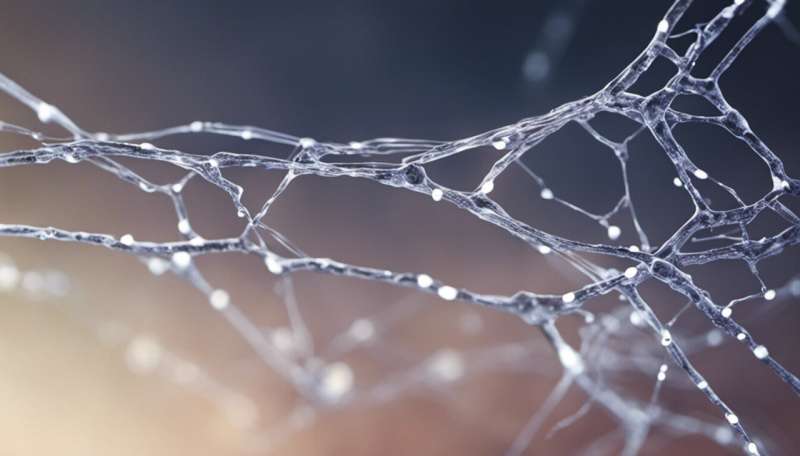Short circuit in molecular switch intensifies pain

While searching for novel painkillers, researchers at KU Leuven in Belgium came to the surprising conclusion that some candidate drugs actually increase pain. In a study published in the journal Nature Chemical Biology, the researchers show that a molecular switch in the nerves responsible for detecting pain can 'short-circuit', thus aggravating the onset of pain.
Pain functions as an important alarm signal. It alerts us to potential bodily harm – a hot or sharp object, for example – and motivates us to withdraw from damaging situations. At the cellular level, pain involves the stimulation of a network of pain nerves spread through the skin, mucosa and bodily organs.
Embedded in the cell wall surrounding these nerves are ion channels. These tiny, microscopic pathways respond to stimuli such as extreme cold or heat, mechanical pressure or harmful chemicals. When ion channels open, an electrical signal is created, transmitted to the brain, and interpreted as pain.
In previous research, the team of KU Leuven researchers led by Professor Thomas Voets (Laboratory of Ion Channel Research) and Professor Joris Vriens (Laboratory of Obstetrics and Experimental Gynaecology) discovered that a particular ion channel – TRPM3 – acts as a molecular fire detector: the ion channel detects heat and the hormone pregnenolone sulfate, a precursor to the sex hormones estrogen and testosterone and a trigger for pain and inflammation. In the present study, the researchers were looking for TRPM3 inhibitors that could potentially be used as painkillers.
Surprisingly, their results show that a number of drugs meant as painkillers actually increased pain in mice tested in the study, says Professor Voets: "Normally, when the ion channel is closed, no electrical signal is sent to the brain and therefore no pain is detected. But we found that pain can indeed occur despite a closed ion channel. How? A short-circuit in the ion channel. When short-circuiting occurs, the electrical signal effected by a stimulus does not follow the normal pathway through the central pore of the ion channel. Instead, it navigates an alternative path through the surrounding material. This 'electric leak' activates the pain nerves, thus increasing the sensation of pain. This may explain the pain-enhancing side effects of some drugs – such as clotrimazole, a common remedy for yeast infections that often causes unpleasant side effects such as irritation and burning sensations.
"It is striking that short-circuits in the ion channel only occur at high hormone levels. This could explain why some patients experience these side effects while others do not," says Professor Voets. The researchers hope this new knowledge about TRPM3-dependent pain will contribute to the development of new painkillers with fewer painful side effects.
More information: "Opening of an alternative ion permeation pathway in a nociceptor TRP channel" by Joris Vriens, Katharina Held, Annelies Janssens, Balázs István Tóth, Sara Kerselaers, Bernd Nilius, Rudi Vennekens & Thomas Voets, www.nature.com/nchembio/journa … l/nchembio.1428.html
Journal information: Nature Chemical Biology
Provided by KU Leuven



















